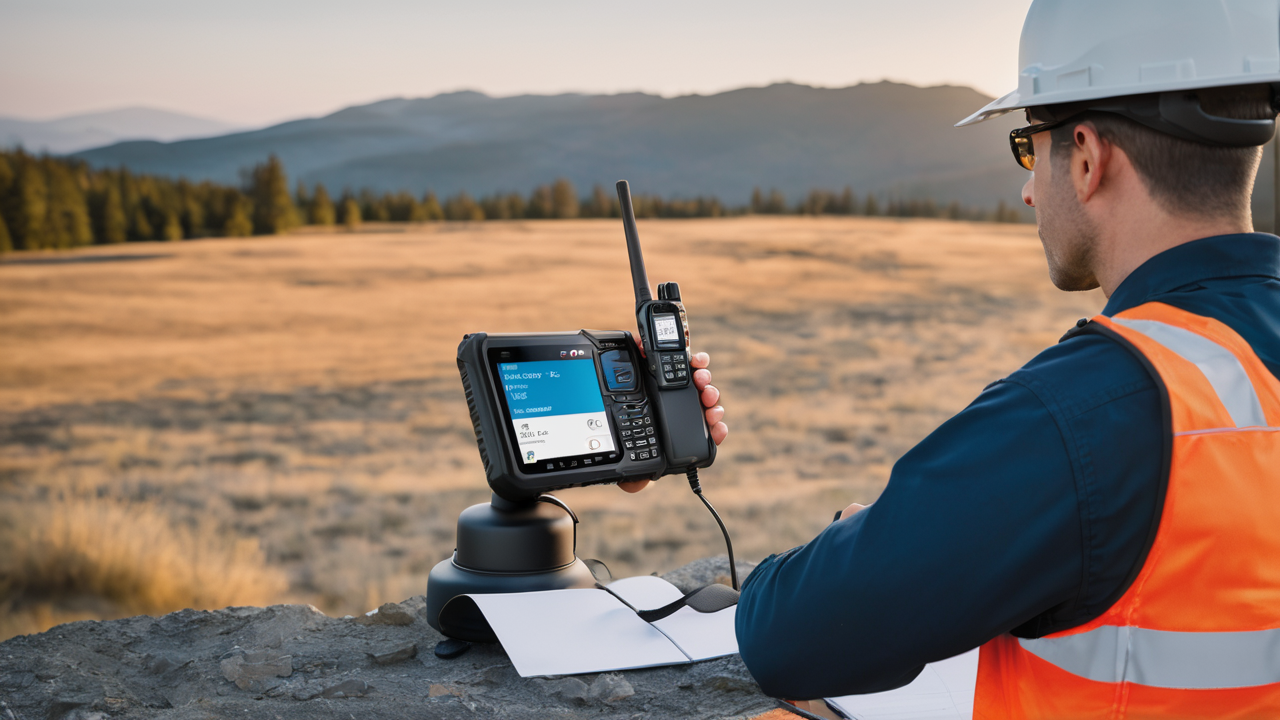Understanding Two-Way Radio Technology
The Evolution of Walkie Talkies
Walkie talkies have come a long way since their debut in World War II. Early models were bulky and had limited range. Today's devices are sleek and powerful. They offer clear audio and long-range communication. Modern walkie talkies use digital technology for better sound. They also have features like GPS tracking and text messaging. The evolution has made them essential for many industries. From construction to event management, they remain crucial tools.

Key Features of Modern Two-Way Radios
Modern two-way radios boast impressive features. They often have:
- Long battery life
- Rugged, waterproof designs
- Clear digital audio
- Multiple channels
- Privacy codes
- Emergency alert buttons
- GPS capabilities
- Bluetooth connectivity
These features make them versatile for various professional uses. They can work in harsh conditions and provide reliable communication. Some models even offer Wi-Fi connectivity for extended range.
The Regulatory Landscape for Walkie Talkies in the US
In the US, the FCC regulates walkie talkie use. Different frequency bands are available for various purposes. The most common are:
- FRS (Family Radio Service): No license needed, limited range
- GMRS (General Mobile Radio Service): License required, longer range
- MURS (Multi-Use Radio Service): No license needed, medium range
Businesses must ensure they comply with FCC rules. This includes using the right frequencies and power levels. Some industries may need special licenses for their communication needs.
Evaluating Top Two-Way Radios for Professionals
Comparing Battery Life and Durability
Battery life is crucial for professional use. Top models offer 12-18 hours of use per charge. Some have removable batteries for easy swapping. Durability is equally important. Look for:

- IP ratings for water and dust resistance
- MIL-STD ratings for shock and vibration resistance
- Operating temperature ranges
The best radios can survive drops, water exposure, and extreme temperatures. This ensures they keep working in tough conditions. Consider models with long-lasting lithium-ion batteries for extended use.
Assessing the Maximum Range of Communication
Range is a key factor in choosing a two-way radio. Most professional models claim ranges of 20-35 miles. However, real-world range is often less. Factors affecting range include:
- Terrain
- Buildings
- Weather conditions
- Radio power output
For best results, choose radios with higher wattage. GMRS radios often offer better range than FRS models. Some brands now use repeater technology to extend range. This can be crucial for large work sites or remote areas.
Integration Capabilities with Other Communication Systems
Modern two-way radios can integrate with other systems. This enhances their utility in professional settings. Look for radios that offer:
- Bluetooth for wireless headsets
- Wi-Fi for extended range and data transfer
- Smartphone app connectivity
- Dispatch software compatibility
These features allow seamless communication across platforms. They can connect to computers, phones, and other devices. This integration is valuable for coordinating large teams or events.
Selecting the Right Two-Way Radio for Your Business
Assessing Cost and Value for Money
When choosing two-way radios, consider both upfront and long-term costs. Initial prices can range from $100 to $1000 per unit. Factors affecting cost include:

- Features and capabilities
- Brand reputation
- Durability and expected lifespan
- Licensing requirements
Consider the total cost of ownership. This includes maintenance, batteries, and accessories. Some brands offer better warranties or customer support. This can add value over time. Balance cost with the features your business truly needs.
Tailoring to Specific Industry Needs
Different industries have unique communication needs. For construction, durability and noise cancellation are key. In hospitality, discreet designs and clear audio matter most. Consider these industry-specific features:
- Intrinsically safe models for hazardous environments
- Voice activation for hands-free use
- Multi-language support for diverse workforces
- Lone worker safety features
Choose radios that match your industry's demands. This ensures you get the most value and functionality. Some brands offer industry-specific models or customizable options.
Training and User Adoption Considerations
Even the best radios are useless if staff can't use them effectively. Consider these factors for smooth adoption:
- Ease of use and intuitive controls
- Available training resources from the manufacturer
- Compatibility with existing equipment
- Scalability for future needs
Look for radios with simple interfaces and clear instructions. Some brands offer online training or on-site sessions. This can help staff get up to speed quickly. Ensure the chosen model can grow with your business needs. This prevents the need for frequent upgrades or replacements.
In conclusion, choosing the right two-way radio involves careful consideration. Assess your needs, budget, and industry requirements. Look for a balance of features, durability, and value. With the right choice, you can enhance communication and efficiency in your professional setting.


